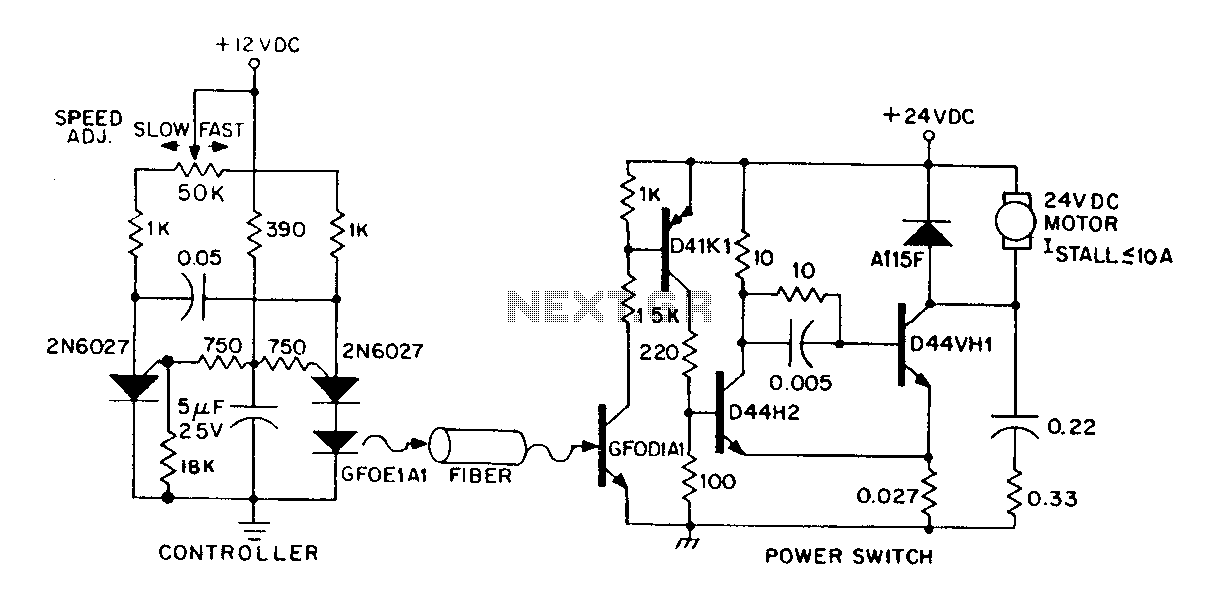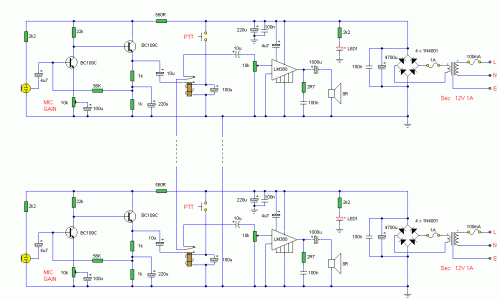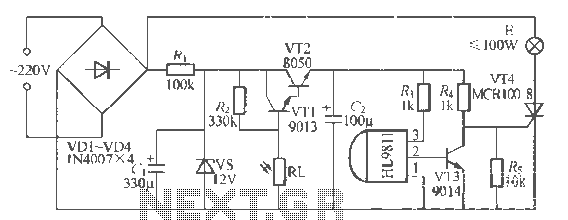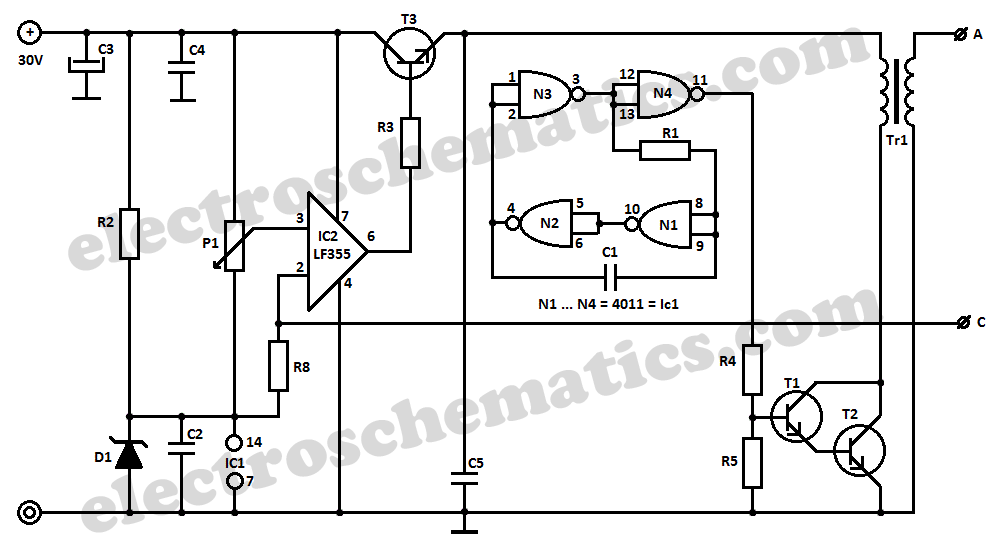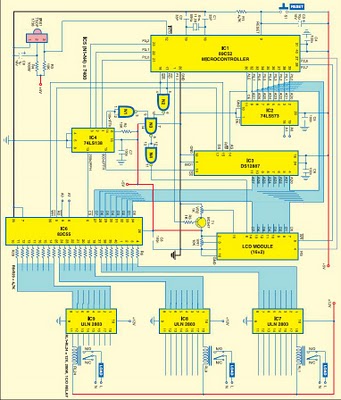
High speed warning device
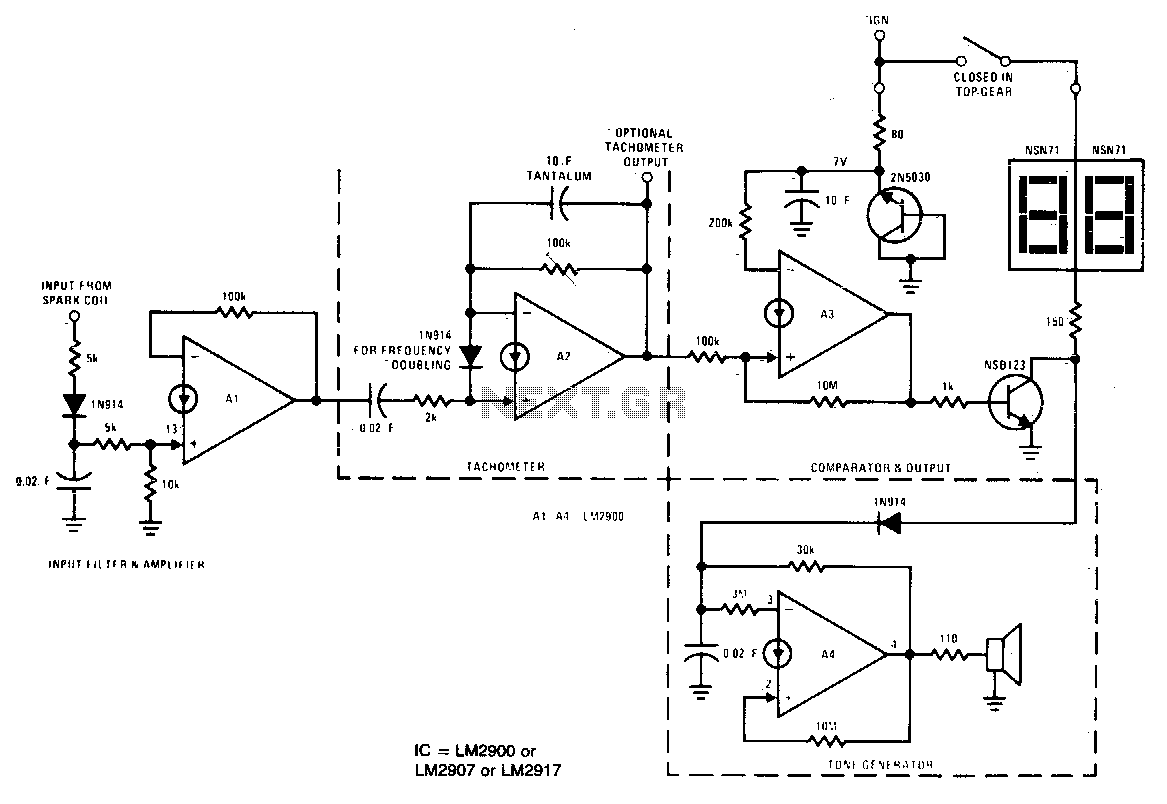
A1 amplifies and regulates the signal from the spark coil. A2 converts frequency to voltage so that its output is a voltage proportional to engine RPM. A3 compares the tachometer voltage with the reference voltage and turns on the output transistor at the set speed. Amplifier A4 is used to generate an audible tone whenever the set speed is exceeded.
The circuit consists of several key components that work together to monitor and regulate engine speed. The first component, A1, functions as an amplifier and regulator, enhancing the signal received from the spark coil. This is crucial for ensuring that the subsequent components receive a stable and strong signal, which is necessary for accurate processing.
Following A1, A2 operates as a frequency-to-voltage converter. It takes the frequency signal derived from the engine's RPM and converts it into a corresponding voltage level. This output voltage is directly proportional to the engine's RPM, allowing for easy measurement and comparison in the next stage of the circuit.
A3 serves as a comparator. It compares the voltage output from A2 with a predetermined reference voltage. When the engine RPM reaches a specific threshold, A3 activates an output transistor. This action can trigger various responses in the system, such as activating a warning light or engaging a control mechanism, depending on the overall design of the circuit.
Additionally, A4 is employed to generate an audible tone when the engine exceeds the set speed. This amplifier is designed to produce a sound signal that alerts the operator of the engine's over-speed condition, enhancing safety and operational awareness.
Overall, the described circuit provides a comprehensive solution for monitoring engine RPM, ensuring that the engine operates within safe limits while providing audible alerts for over-speed conditions. Each component plays a vital role in the system, contributing to its overall functionality and reliability.A1 amplifies and regulates the signal from the spark coil. A2 converts frequency to voltage so that its output is a voltage proportional to engine rpm. A3 compares the tachometer voltage with the reference voltage and turns on the output transistor at the set speed Amplifier A4 is used to generate an audible tone whenever the set speed is exceeded.
The circuit consists of several key components that work together to monitor and regulate engine speed. The first component, A1, functions as an amplifier and regulator, enhancing the signal received from the spark coil. This is crucial for ensuring that the subsequent components receive a stable and strong signal, which is necessary for accurate processing.
Following A1, A2 operates as a frequency-to-voltage converter. It takes the frequency signal derived from the engine's RPM and converts it into a corresponding voltage level. This output voltage is directly proportional to the engine's RPM, allowing for easy measurement and comparison in the next stage of the circuit.
A3 serves as a comparator. It compares the voltage output from A2 with a predetermined reference voltage. When the engine RPM reaches a specific threshold, A3 activates an output transistor. This action can trigger various responses in the system, such as activating a warning light or engaging a control mechanism, depending on the overall design of the circuit.
Additionally, A4 is employed to generate an audible tone when the engine exceeds the set speed. This amplifier is designed to produce a sound signal that alerts the operator of the engine's over-speed condition, enhancing safety and operational awareness.
Overall, the described circuit provides a comprehensive solution for monitoring engine RPM, ensuring that the engine operates within safe limits while providing audible alerts for over-speed conditions. Each component plays a vital role in the system, contributing to its overall functionality and reliability.A1 amplifies and regulates the signal from the spark coil. A2 converts frequency to voltage so that its output is a voltage proportional to engine rpm. A3 compares the tachometer voltage with the reference voltage and turns on the output transistor at the set speed Amplifier A4 is used to generate an audible tone whenever the set speed is exceeded.
